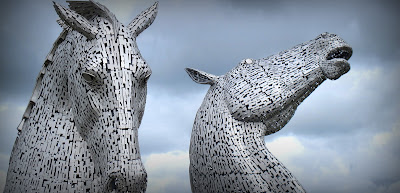Following the travels of a 2011 Brazilian Volkswagen Type 2 camper van around the UK. Zoom in/out on the map to see where we have visited. Click on the marker to find the link direct to that page. I will be adding more and more of my locations from the last few years over the coming weeks.
Monday, 22 June 2015
BrazilianVWBay.com Northern Meet 2015 - Stirling
Another fantastic weekend with great people, great vans and great sausages!
We all took a walk to the National Wallace Monument
http://skoobyblue.blogspot.co.uk/2015/06/national-wallace-monument-stirling.html
I took a walk up a hill
http://skoobyblue.blogspot.co.uk/2015/06/dumyat-hill-stirling.html
We all drove in convoy to the amazing Kelpies
http://skoobyblue.blogspot.co.uk/2015/06/the-kelpies-filkirk.html
And then on to the impressive Falkirk Wheel
http://skoobyblue.blogspot.co.uk/2015/06/falkirk-wheel.html
We all took a walk to the National Wallace Monument
http://skoobyblue.blogspot.co.uk/2015/06/national-wallace-monument-stirling.html
I took a walk up a hill
http://skoobyblue.blogspot.co.uk/2015/06/dumyat-hill-stirling.html
We all drove in convoy to the amazing Kelpies
http://skoobyblue.blogspot.co.uk/2015/06/the-kelpies-filkirk.html
And then on to the impressive Falkirk Wheel
http://skoobyblue.blogspot.co.uk/2015/06/falkirk-wheel.html
Falkirk Wheel
The Falkirk Wheel is a rotating boat lift in Scotland, connecting the Forth and Clyde Canal with the Union Canal. The lift, named after the nearby town of Falkirk in central Scotland, opened in 2002. It reconnects the two canals for the first time since the 1930s as part of the Millennium Link project.
The plan to regenerate central Scotland's canals and reconnect Glasgow with Edinburgh was led by British Waterways with support and funding from seven local authorities, the Scottish Enterprise Network, the European Regional Development Fund, and the Millennium Commission. Planners decided early on to create a dramatic 21st-century landmark structure to reconnect the canals, instead of simply recreating the historic lock flight.
The wheel raises boats by 24 metres (79 ft), but the Union Canal is still 11 metres (36 ft) higher than the aqueduct which meets the wheel. Boats must also pass through a pair of locks between the top of the wheel and the Union Canal. The Falkirk Wheel is the only rotating boat lift of its kind in the world, and one of two boat lifts in the United Kingdom, the other being the Anderton boat lift.
The Kelpies, Falkirk
The Kelpies are 30-metre high horse-head sculptures, standing next to a new extension to the Forth and Clyde Canal, and near River Carron, in The Helix, a new parkland project built to connect 16 communities in the Falkirk Council Area, Scotland. The sculptures were designed by sculptor Andy Scott and were completed in October 2013.The sculptures form a gateway at the eastern entrance to the Forth and Clyde canal, and the new canal extension built as part of The Helix land transformation project. The Kelpies are a monument to horse powered heritage across Scotland.
The name was chosen by Scottish Canals at the inception of The Helix project, in 2005. The Kelpies name reflected the mythological transforming beasts possessing the strength and endurance of 10 horses; a quality that is analogous with the transformational change and endurance of Scotland's inland waterways. The Kelpies represent the lineage of the heavy horse of Scottish industry and economy, pulling the wagons, ploughs, barges and coalships that shaped the geographical layout of the Falkirk area.
The name was chosen by Scottish Canals at the inception of The Helix project, in 2005. The Kelpies name reflected the mythological transforming beasts possessing the strength and endurance of 10 horses; a quality that is analogous with the transformational change and endurance of Scotland's inland waterways. The Kelpies represent the lineage of the heavy horse of Scottish industry and economy, pulling the wagons, ploughs, barges and coalships that shaped the geographical layout of the Falkirk area.
Dumyat Hill, Stirling
Dumyat /dəˈmaɪ.ɨt/ (Scottish Gaelic: Dùn Mhèad) is a hill at the western extremity of the Ochil Hills in central Scotland. The name is thought to originate from Dun (hill fort) of the Maeatae.
Although relatively small (its height is 418 metres), the characteristic shape of the hill forms an important part of the distinctive scenery of the Stirling area, and it is often depicted (particularly in postcards and calendars) in combination with the nearby Abbey Craig.
Subscribe to:
Comments (Atom)


















































